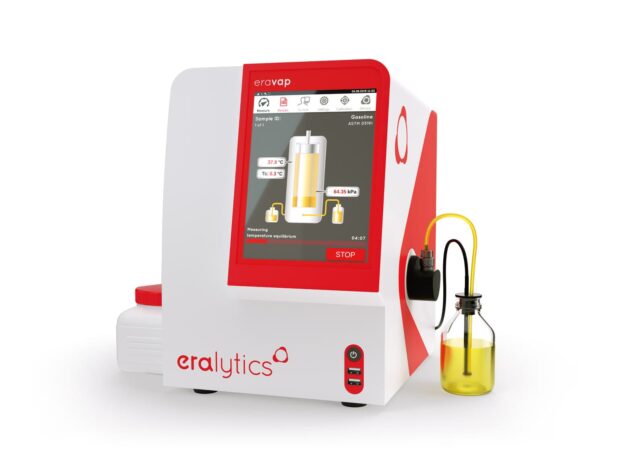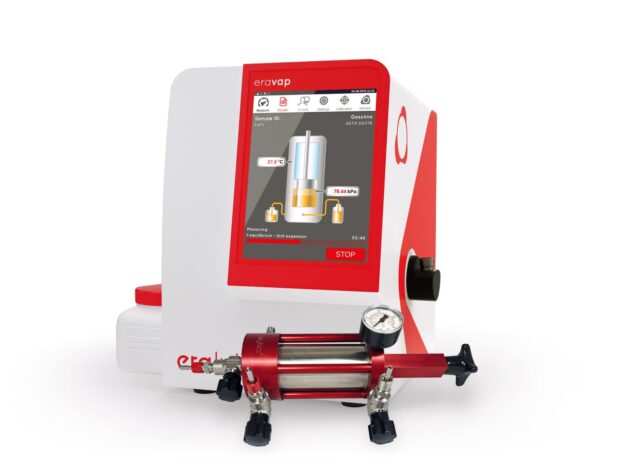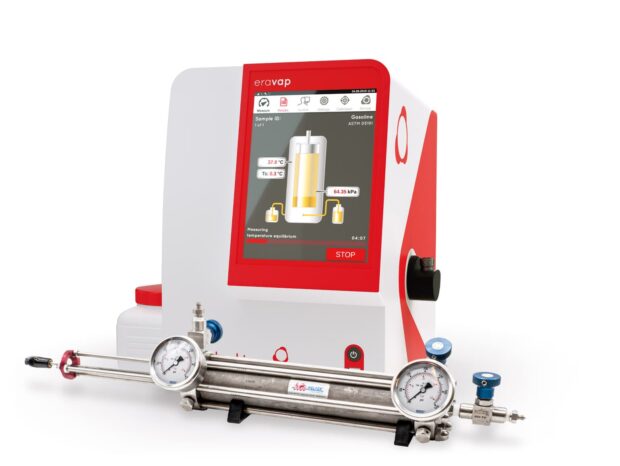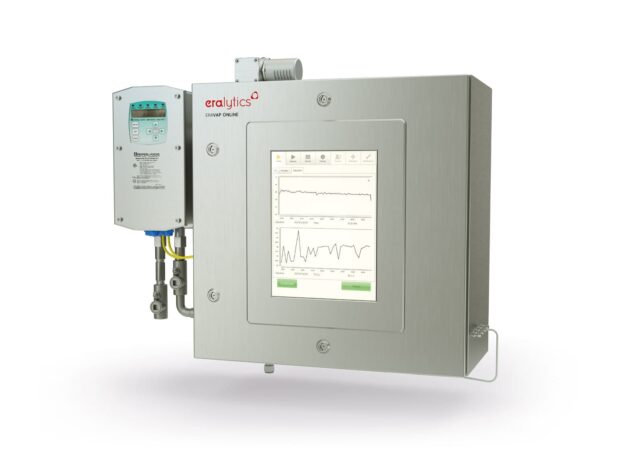Standard Test Method for Vapor Pressure of Petroleum Products and Liquid Fuels (Mini Method—Atmospheric).
Get more information about the standard at ASTM D5482-20a.
ASTM D5482 is a standard test method for determining the vapor pressure of petroleum products and liquid fuels using an automatic vapor pressure instrument. This method, known as the Mini Method—Atmospheric, is particularly applicable to samples with boiling points above 0 °C (32 °F) that exert a vapor pressure between 7 kPa and 110 kPa (1.0 psi and 16 psi) at 37.8 °C (100 °F) with a vapor-to-liquid ratio of 4:1. It is suitable for gasolines containing oxygenates and does not account for dissolved water in the sample.
Details
The test method involves using automated vapor pressure instruments that perform measurements on liquid sample sizes ranging from 1 mL to 10 mL. A notable modification from Test Method D5191 is that, in ASTM D5482, the test chamber is at atmospheric pressure prior to sample injection. This approach allows for the determination of the dry vapor pressure equivalent (DVPE) of gasoline and gasoline-oxygenate blends through a correlation equation. The calculated DVPE is considered equivalent to results obtained when tested by Test Method D4953.
Vapor pressure is a critical physical property of volatile liquids, significantly impacting the performance of automotive and aviation gasolines. It affects engine starting, warm-up, and the tendency to vapor lock under high operating temperatures or at high altitudes. Additionally, maximum vapor pressure limits for gasoline are legally mandated in some regions as a measure of air pollution control.
Industries and Applications
ASTM D5482 is essential in various industries where fuel vapor pressure plays a crucial role in quality control and regulatory compliance, including:
- Petroleum Industry: Used by refineries and fuel suppliers to ensure compliance with fuel vapor pressure regulations
- Automotive Industry: Helps manufacturers and service providers evaluate fuel performance in vehicles
- Aviation Industry: Ensures that aviation fuels meet strict performance and safety requirements
- Regulatory and Environmental Agencies: Supports authorities in setting and enforcing fuel vapor pressure limits to reduce emissions and air pollution
- Research and Development: Used in laboratories and fuel testing facilities for product development and quality assurance



